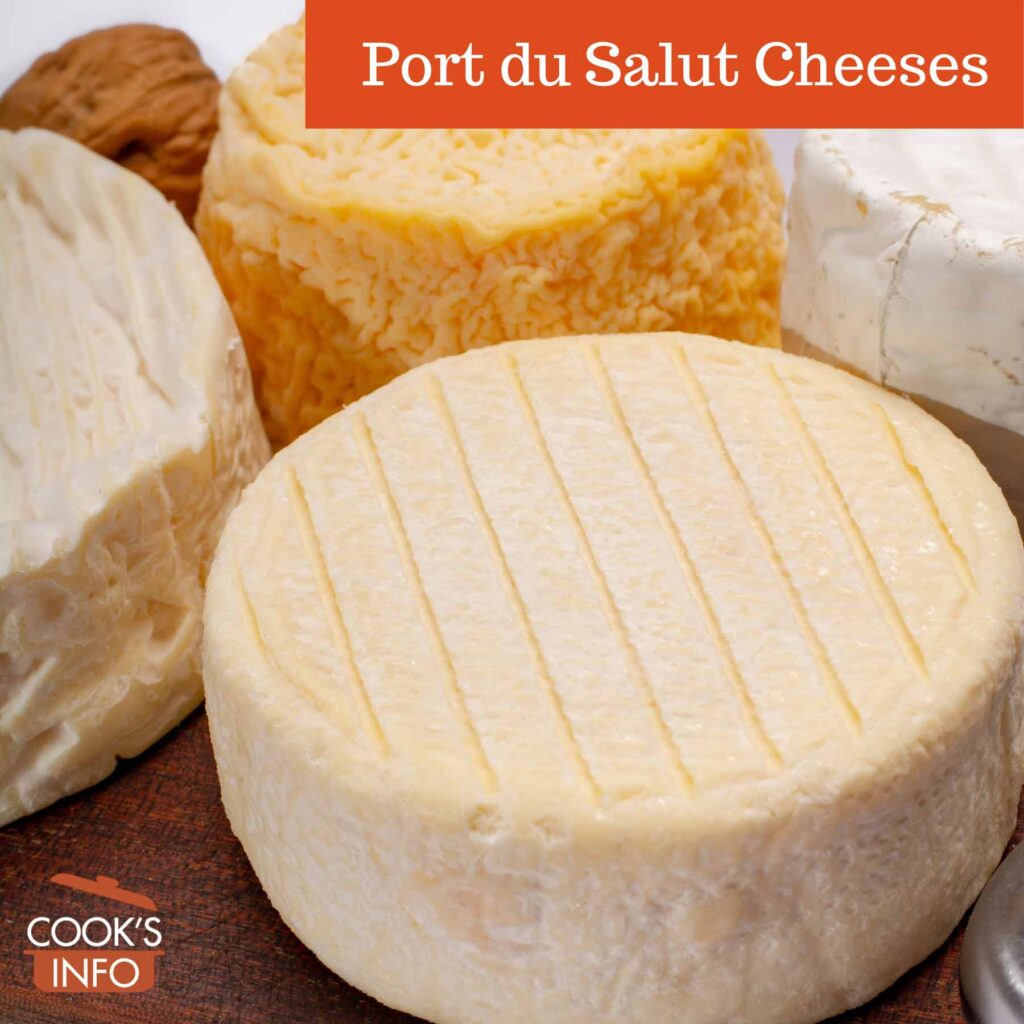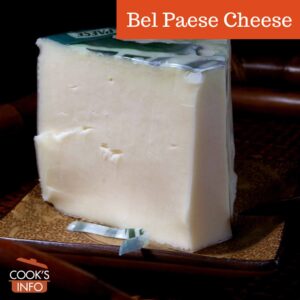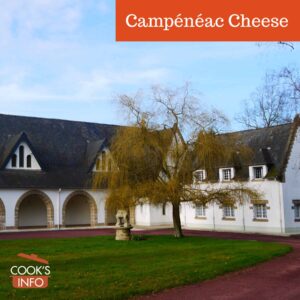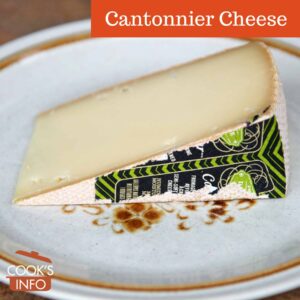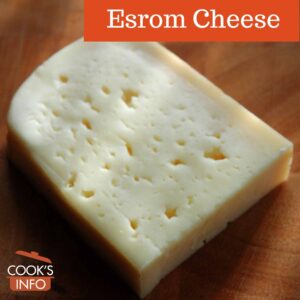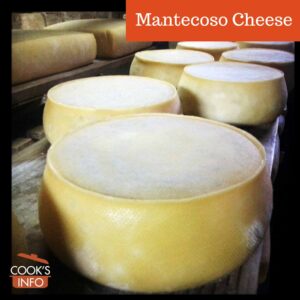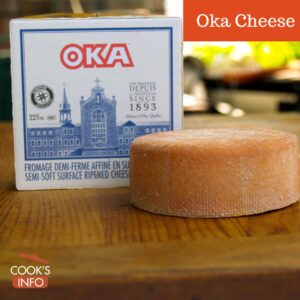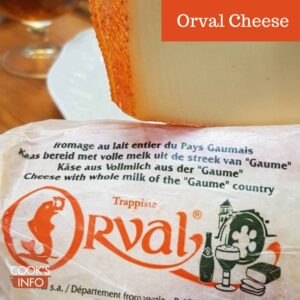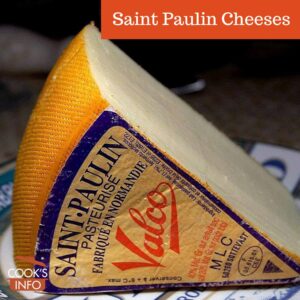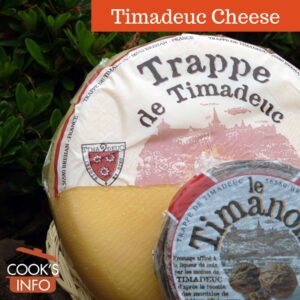The term “Port du Salut Cheeses” is used to describe a family of cheeses which sprang from the cheese called “Port Salut.” These cheeses are also often called “Port du Salut style.”
The rind on these cheeses is typically whiffy, and is not edible on many of them. All are semi-firm, so they can be sliced.
Some brand names are Campénéac, Echourgnac, Nantais, Pave d’Auge, Pont l’ Évêque, Reblochon, Tamie, Timadeuc, Tomme de Savoie and Trappiste de Belval.
They can also be classed as Surface-ripened cheeses and Washed-rind cheeses. These are also referred to as “Trappist cheeses.”
Port du Salut vs Saint Paulin
Some cheese professionals prefer to reserve the term for artisanal ones produced by monasteries or small creameries, and to class more mass-produced ones as Saint Paulin style. But among amateurs, the two terms are used interchangeably now.
The artisanal creameries will still generally actually wash and cure the rind, giving the cheese a more developed taste.
History Notes
The Port du Salut style cheeses (or “Trappist cheeses”) originated with Trappist Cistercian monks at Notre Dame du Port-du-Salut Abbey at Port-Ringeard, Entrammes (between Laval and Angers), on the Mayenne river in the département of Mayenne in Pays de la Loire, France. See Port Salut cheese for more details on the origin.
There is one point of irony about these monks and their cheese. There are two types of Cistercian monks, Common and Strict. Trappist monks are Strict.
Earlier Cistercians did not eat things such as fish, eggs, milk or cheese. By 1664, though, most Cistercians had abandoned the earlier strictness in diet, as well as in other things. An abbot called Armand Jean de Rancé, at his Abbey of Notre Dame de la Grande Trappe, started a movement to return to all the earlier practices, such as restricted diet and strict silence. Monks who follow this stricter regime are called Trappists, after the name of that Abbey.
The monks at Notre Dame du Port-du-Salut were Trappists: they would have been forbidden from eating the very cheese they made.
Cistercian monks are also called the “white monks”, from the colour of the habit they wear.
Lost Port du Salut Cheeses
Our Lady of Gethsemani
Trappist monks at Our Lady of Gethsemani in Trappist, Kentucky made a Port du Salut style cheese from approximately the start of the 1900s until they discontinued production in 2015.
Reasons for the discontinuation included the prohibitive cost of bringing equipment up to modern standards, and, a change in the work force:
“At present, the refrigeration machinery at Gethsemani Farms is quite ancient in some areas. Some expensive investments would have been needed to continue making the cheese. That was a part of the decision to stop making cheese. [Also], new members of the monastery tend to be older than in the past so the proportion of younger able-bodied men has declined and the cheesemaking was quite physically strenuous.” [1]Gethsemani Farms To Stop Making Its Trappist Semi-Soft Cheese. Cheese Reporter. 24 July 2015. Page 18, col. 4. Accessed April 2022 at https://npaper-wehaa.com/cheese-reporter/2015/07/s3/#?article=2565999 The monks now focus on fruit cakes and fudge (as of 2016 onwards.)
Campénéac Cheese
Campénéac Cheese was made from 1953 to 1994. It was reputedly discontinued in part owing to complications that would have been involved in bringing it up to standards of the time. [2]Abbaye de la Joie Notre-Dame. Accessed December 2021 at https://www.leguidedufromage.com/abbaye-de-la-joie-notre-dame-io108.html . The nuns now focus on baked goods instead (as of 2022.)
Types of Port du Salut Cheeses
Bel Paese Cheese
Campénéac Cheese
Cantonnier Cheese
Entrammes Cheese
Esrom Cheese
Limburger Cheese
Mantecoso Cheese
Oka Cheese
Orval Cheese
Saint Paulin Cheeses
Timadeuc Cheese
References
| ↑1 | Gethsemani Farms To Stop Making Its Trappist Semi-Soft Cheese. Cheese Reporter. 24 July 2015. Page 18, col. 4. Accessed April 2022 at https://npaper-wehaa.com/cheese-reporter/2015/07/s3/#?article=2565999 |
|---|---|
| ↑2 | Abbaye de la Joie Notre-Dame. Accessed December 2021 at https://www.leguidedufromage.com/abbaye-de-la-joie-notre-dame-io108.html |


